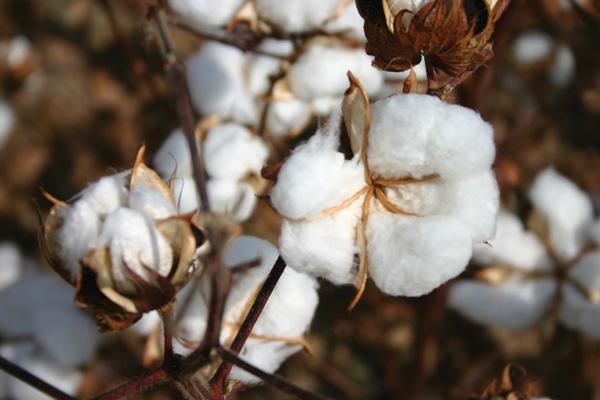September 24, 2010

California’s San Joaquin Valley cotton crop is like the Energizer Bunny … the one that never stops.
However, University of California Extension state cotton specialist Bob Hutmacher and farm advisors Dan Munk from Fresno County and Steve Wright (Kings and Tulare counties) say the crop is so late it will be like the bunny going in circles … it will never hit the 100-yard dash finish line, regardless of how long the batteries last. Growers must recognize it will be a shorter than normal race, and they must yank the energy source to stop it.
Chasing a normal cotton crop in 2010 will be like a stub-tailed Blue Heeler dog chasing its tail. He’ll never catch it and growers should not expect to achieve desired 3 and 4 bale yields. Three may be a top yield this season.
Although many irrigated very late, the water must stop and the crop prepared for picking to have any chance of avoiding major quality losses from fog and rain, warned Wright.
He said some growers will only gather 1.5 bales. However, they had better make sure it is good quality or the economic hit will be even worse. Others more fortunate could reach 3 bales. Lygus took a lot of the crop, especially in Kern County where growers treated several times and still do not have a decent crop. Cool temperatures took away others’ crops.
Regardless of the situation, Wright told growers and PCAs at the recent field day at the West Side Research and Extension Center at Five Points, Calif., to pick a reasonable harvest date and then back up the calendar to a start date for defoliation, recognizing that it will be a tough defoliation season.
“You want to get started. Temperatures may be warm now, but they will get cooler. It may be in the low 90s, but it will soon be in the 80s and that 10 degres will make a lot of difference in how products (defoliants) work,” he said.
Standing beside a Pima field at the station on Sept. 16, Wright remarked at how robust the cotton still looked. It was blowing yellow flowers out the top like crazy, looking more like July than September. It was beautiful and scary at the same time. Stopping a full season crop like Pima will not be easy.
If growers wait for the last possible boll to open this year, it will be a long, long wait, he said.
To compound the late harvest season, growers face a shortage of the more desirable defoliants, Ginstar and Adios, according to Wright. Larger growers likely know that, according to Wright. Smaller growers will learn about it soon enough.
Fortunately, he said, there are available old, yet good alternatives, Folex and Def. They may not be the most desirable products because of some side effects, but they will work, maybe better than the more popular products. A shortage of those products leaves sodium chlorate and paraquat and a final option.
With all defoliation programs, Wright highly recommends ethephon this year.
Wright reminded growers that the last time there was a delayed crop and late harvest (1998), Folex and Def worked better than most other products. “Def and Folex are still good products, but you need to use ethephon in conjunction with them or any defoliant this season.”
One reason is that Ginstar quits working when temperatures dip below 65. Def and Folex continue to work until 55 degrees.
If a grower uses Ginstar, Wright said to use a high labeled rate. Low rates freeze leaves.
It will also likely be a multiple defoliation season, added the veteran farm advisor.
Defoliation is as much art as science and growers must be aware of temperatures and individual field conditions in deciding which defoliation program to use on each field.
For sure, he said, start earlier than the UC recommended 4 nodes above cracked boll and 50 percent to 60 percent open bolls.
He suggested starting defoliation when 40 percent of the bolls are open and the plants are at 6 nodes above cracked boll.
Waiting as long as recommended for a normal crop this fall in hopes of getting every boll possible will only result in a crop sitting at 7 to 8 nodes above cracked boll in the fog and rain and green forever, he said.
Starting earlier than normal may result in a “slight hit” on micornaire, but it should still be in the “acceptable range ... not enough to be concerned about.
“Starting defoliation at 6 to 8 nodes above cracked boll is doable in a late crop situation like we see this year and still preserve quality,” he added.
Cotton prices are higher than they have been in years and protecting quality is more critical than ever this season, especially for Pima. This Extra Long Staple cotton is in high demand with mills wanting bale delivery dates before defoliation.
This late, green crop is also generating cotton aphids and whiteflies, according to University of California, Davis, entomologist Larry Godfrey.
These honeydew secreting insects are heightening concerns about sticky cotton, something the industry wants to avoid at all costs.
Nine years ago cotton from the Valley was given a sticky cotton stigma, and it took several years for it to disappear.
Wright says it would be prudent to add an insecticide to defoliation treatments.
About the Author(s)
You May Also Like






